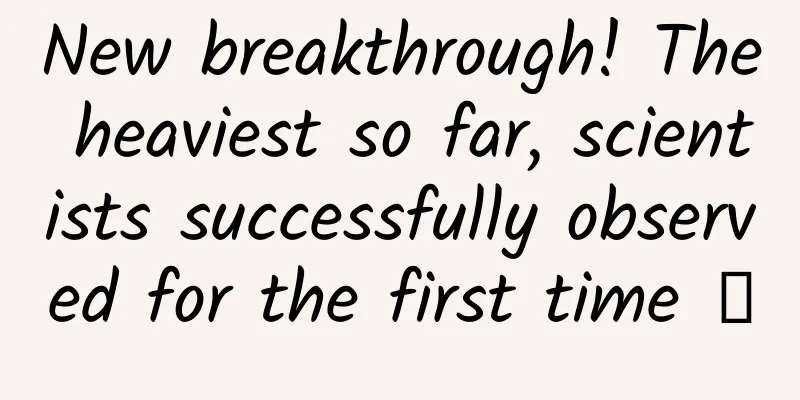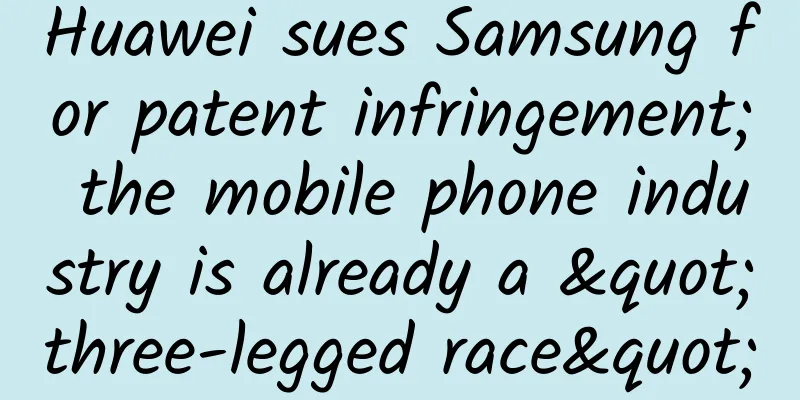New breakthrough! The heaviest so far, scientists successfully observed for the first time →

|
Science and Technology Daily reporter Lu Chengkuan Based on the collision experiment conducted on the Relativistic Heavy Ion Collider in the United States, researchers from the Institute of Modern Physics of the Chinese Academy of Sciences and other Chinese and foreign institutions have observed for the first time a new antimatter hypernucleus - antihyperhydrogen-4 in relativistic heavy ion gold-gold collisions. This is the heaviest antimatter hypernucleus observed by scientists so far. The relevant research results were published online in the journal Nature on the 21st. Image source: Institute of Modern Physics, Chinese Academy of Sciences According to current mainstream physics theories, the universe was born in the Big Bang about 13.8 billion years ago, which produced equal amounts of matter and antimatter. However, in our universe, matter is common, while antimatter is very rare. Antimatter nuclei and antimatter hypernuclei (i.e., nuclei containing hyperons such as Lambda) formed by further combining several antibaryons are even more difficult to produce. Since the "negative energy solution" of the Dirac equation in 1928 predicted the existence of antimatter, scientists have only discovered six antimatter (hyper) nuclei. The anti-hyperhydrogen-4 discovered this time was produced in a relativistic heavy ion collision experiment and consists of an antiproton, two antineutrons and an anti-Lambda hyperon. Because it contains unstable anti-Lambda hyperons, anti-hyperhydrogen-4 will decay after flying only a few centimeters. The research team analyzed the experimental data of about 6.6 billion heavy ion collision events and finally obtained about 16 signals of anti-hyperhydrogen-4. "We also measured the lifetime of anti-superhydrogen-4 and compared it with its corresponding positron superhydrogen-4. Within the measurement accuracy range, there is no obvious difference in the lifetimes of the two, which once again verifies the symmetry of the properties of matter and antimatter." Qiu Hao, a researcher at the Institute of Modern Physics of the Chinese Academy of Sciences, said that the discovery and property research of anti-superhydrogen-4 has enabled people to take another important step in the exploration of antimatter and the symmetry of matter and antimatter. Source: Science and Technology Daily Editor: Wang Chengyue Review: Julie |
>>: Scientists have grown a 'mini brain'. Will it eventually develop consciousness?
Recommend
NIO to go public on US stock market on September 18, raising $1 billion
NIO will be listed on the U.S. stock market on Se...
How much does it cost to develop a small program for travel products on the market in Nantong?
In order to better penetrate into various industr...
Japanese animation "Crayon Shin-chan" all 1977 episodes in Mandarin and Chinese subtitles
Xiaoxin is 5 years old this year. Don’t think that...
Tell your parents! Huaxi doctors: Using these bags to store food can really cause food poisoning
The old-style pickled cabbage of 315 is still fre...
Lingnan Prehistoric History: The World's Greatest Dinosaurs
What is Lingnan? Since the Yanshan Movement forme...
APP promotion case: practical skills to guide users to authorize APP to send notifications
The success or failure of the initial authorizati...
How did I manage to surpass Mop.com in terms of data in just two years? Many of these methods are still applicable today!
The purpose of writing this article is just to su...
How to attract traffic and promote on Weibo? You have to learn this trick!
There are many ways to attract traffic on Weibo, ...
Apart from the old joke of "see you tomorrow", you don't understand Enoki mushrooms!
When hearing the word "Enoki mushroom",...
Mid-Autumn Festival H5 Creative Special: 5 directions + 10 cases!
Due to its low technical barriers and easy dissem...
Methodology for creating popular Tik Tok videos!
Everyone has basically entered the Douyin channel...
In-depth cooperation between hardware and content: ZIVOO and Mango TV open a new chapter in OTT ecology
With the advent of the intelligent era, hardware ...
Use 3 tricks to easily promote your product
For a large, mature company, promoting a new prod...
"How to write SEO's professional skills" What professional skills does an SEO engineer need to have?
Expand all I believe that many people who are not...
How to make money by creating content? 3 profit models for vertical community operations!
Three profit models of vertical communities: cont...









